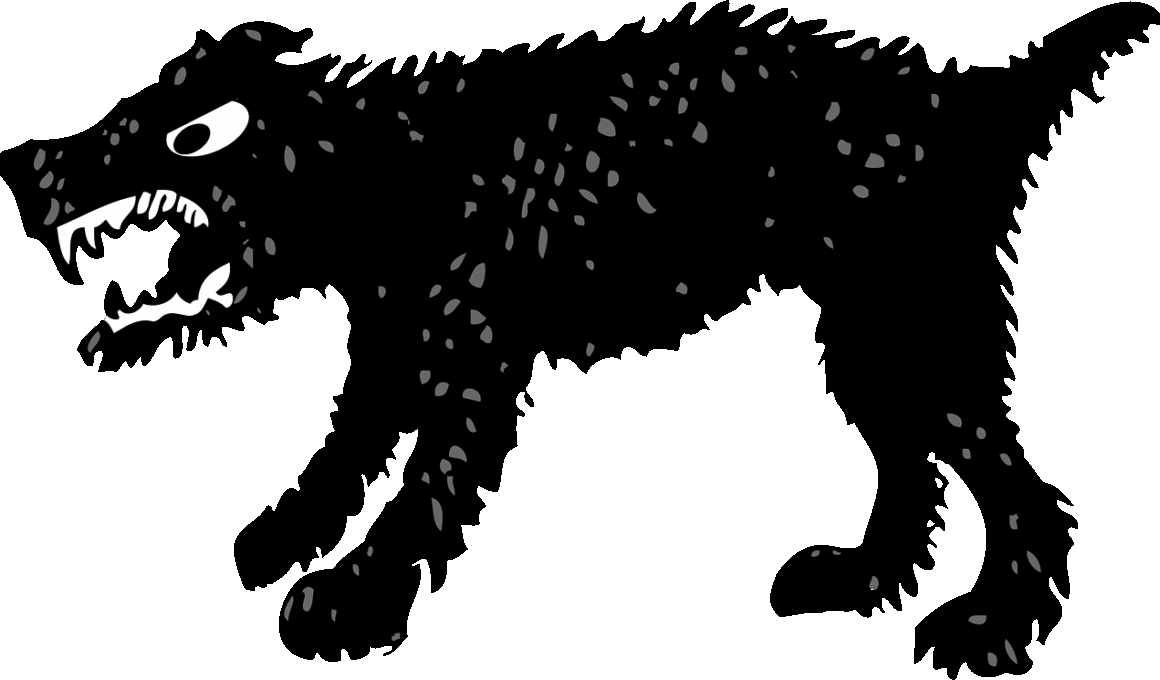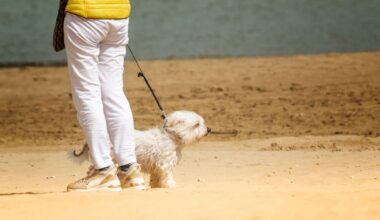How to Safely Manage Dog Aggression at Mealtime
Dog aggression during feeding time can be a serious issue for pet owners. This behavior can stem from various factors, including resource guarding, fear, or previous negative experiences. Recognizing the signs of aggression early on is crucial. Signs may include growling, snapping, or stiffening of the body. Understanding your dog’s body language is essential for safety. It’s important to note that dogs may feel threatened during mealtime, leading to protective instincts. To prevent escalation, it’s advisable to avoid confrontational behavior. Instead, focus on creating a secure environment where your dog feels safe while eating. Training and behavior modification can be effective in addressing these problems. Engaging a professional dog trainer or behaviorist can be helpful. They can provide tailored strategies for your dog’s specific needs. Gradual exposure and counter-conditioning techniques often yield positive results. This process will take time, patience, and a commitment to consistent training. Involving all family members in the training process ensures a unified approach, minimizing confusion for the dog. Patience is key; behavioral changes don’t happen overnight.
Feeding routines play a critical role in managing aggression. Establishing a consistent feeding schedule helps your dog anticipate mealtime, reducing anxiety. Create a quiet space for feeding, away from distractions or other pets. Using a designated feeding area also helps the dog associate that spot with positives. Start by placing the food bowl down and stepping back to give your dog space. Allowing your dog to eat without feeling threatened by human presence is vital. If your dog shows signs of aggression when you approach the bowl, respect their need for space. Gradually, you can begin to desensitize your dog to your presence during mealtime. Introduce positive reinforcement in this process. Reward your dog with treats for calm behavior while eating. Consistent reinforcement builds trust and reduces fear-based reactions. You might also consider using puzzle feeders or slow-feed bowls. These can help mitigate resource guarding behaviors by making mealtime more engaging. By providing mental stimulation, these devices encourage a more relaxed eating experience. Monitoring your dog’s behavior with these tools can provide insight into their comfort level during feeding times.
Understanding Resource Guarding
Resource guarding is a common cause of aggression in dogs, especially at mealtime. Dogs that guard their food tend to view it as a limited resource. This feeling often arises from past experiences where food was scarce. Recognizing this mindset is the first step toward managing the behavior. If your dog reacts aggressively when someone approaches their food dish, it’s important to tread carefully. Instead of punishing the behavior, focus on understanding the underlying issue. Using management techniques, such as feeding your dog in a separate room, can help. This eliminates direct confrontations during meals, thus reducing the potential for aggression. However, it is equally important to work on desensitization and counter-conditioning strategies over time. Gradually help your dog learn to feel more comfortable with people around during mealtime. One effective method involves rewarding calm behavior as others are near the feeding area. Use high-value treats to encourage positive associations with people approaching the food bowl. Over time, your dog may become less reactive and more relaxed around their meals. Consistency and patience are essential for this behavioral change.
In some cases, consult a veterinarian for advice if your dog exhibits extreme aggression. An evaluation will help rule out medical issues contributing to the behavior. Occasionally, aggression may be a symptom of pain or discomfort. Thus, understanding this potential link is crucial for effective intervention. Treatment may include medical assessments and changes in diet or management practices. Ensuring your dog’s overall health is vital for successful behavior modification. Additionally, pet owners should educate themselves about canine behavior and training techniques. Knowledge empowers you to enact positive changes and create a peaceful environment. Resources such as books, online courses, or seminars can provide valuable information. Furthermore, engaging in training classes can offer additional support. Through proper training, owners will learn how to address aggression in a structured manner. A trained professional can implement behavior modification techniques tailored to your dog’s needs. Positive reinforcement methods tend to yield better outcomes, fostering a trusting relationship with your dog. A calm demeanor from the owner can significantly influence the dog’s behavior as well.
Utilizing Positive Reinforcement
Applause when your dog displays good behavior around food further strengthens positive associations. Developing a relationship of trust between you and your pet is paramount. Employing positive reinforcement techniques can significantly alter aggressive behaviors. Recognize and reward non-aggressive behavior, particularly during mealtime. Whenever your dog stays calm as you approach their feeding space, offer them a treat or praise. This will gradually build a sense of security and comfort associated with your presence. Alongside this, be consistent with commands and responses during feeding times. Using a calm voice to encourage your dog while it eats can promote further relaxation. Employ phrases such as “good dog” to reinforce positive actions. Consistency reinforces the desired behavior through repetition. In time, your dog may start to view mealtime less as a time of conflict versus a positive bonding experience with you. This will bring lasting improvements in their overall behavior. Remember, however, that improvement takes time and consistency. So stay committed to the process and celebrate small victories along the way. Your dog will thrive with patience and understanding as they learn more appropriate responses related to food.
Creating a safe and controlled environment during feeding is essential for reducing aggression. One effective strategy is to utilize barriers, such as baby gates or crates. Such tools will limit access to food while maintaining safe separation from irritants, like other pets or people. Implementing a peaceful feeding routine allows dogs to enjoy meals without excessive agitation. Observing your dog’s behavior during meals provides insight into their comfort levels. If the dog shows aggression, it may indicate an underlying issue that requires attention. Monitor for signs of stress or discomfort during feeding times. Providing a calm environment reduces the fight-or-flight response linked to aggressive behavior. Similarly, you can turn feeding time into a rewarding experience. Consistent reinforcement for calmness will help your dog associate meal time with positive interactions. Monitor feeding sessions closely to catch signs of aggression early. Quick intervention with positive reinforcement encourages lasting behavioral changes. Remember, every dog is unique, and adjustments may need to be personalized. Observe your dog’s behavior and make adaptations accordingly, facilitating a smoother and more enjoyable mealtime.
Seek Professional Help When Necessary
If you find yourself struggling to modify your dog’s aggressive behavior at mealtime, do not hesitate to seek professional help. Sometimes, the guidance of an experienced dog trainer or behaviorist can make a significant difference. Professionals observe your interactions and provide feedback tailored to your situation. They can help create a personalized plan that addresses your dog’s unique needs. Training classes are an excellent opportunity to reinforce new skills while gaining additional support from fellow owners. Group dynamics allow for shared experiences and learning from each other while tackling similar issues. Additionally, understanding the root cause of the aggressive behavior will enable targeted strategies to address those behaviors. Be open to feedback and recommendations, as it can provide broader insights into your dog’s mindset. Sometimes, the involvement of a veterinary behaviorist is beneficial, combining medical and behavioral approaches. Such interventions target both physical and emotional health. With the right support, you can help your dog feel secure and content during mealtimes, ultimately improving their emotional well-being as well as coexistence in the household.
With diligence and patience, it’s entirely possible to manage dog aggression during mealtime successfully. Establishing a calm and enjoyable dining environment for your furry friend is essential. By implementing the techniques discussed, you set the stage for healthier behavior patterns. Consistent reinforcement and gradual exposure to your presence during meals help cultivate a secure feeling for your dog. Ensure that each feeding session is approached with empathy and understanding. Taking the time to recognize progress, no matter how small, encourages you and your dog to continue. It’s natural for setbacks to occur when modifying behavior; just remember to remain calm and patient. Over time, you will likely see improvements in your dog’s attitude toward meal times. Following the principles of positive reinforcement, training, safety measures, and expert guidance, you can effectively handle aggression during feeding time. You and your dog can navigate through challenges together, reinforcing a positive relationship. Trust develops with consistent and thoughtful interactions. Ultimately, the goal is to create a peaceful coexistence and a nourishing mealtime experience for your pet.


